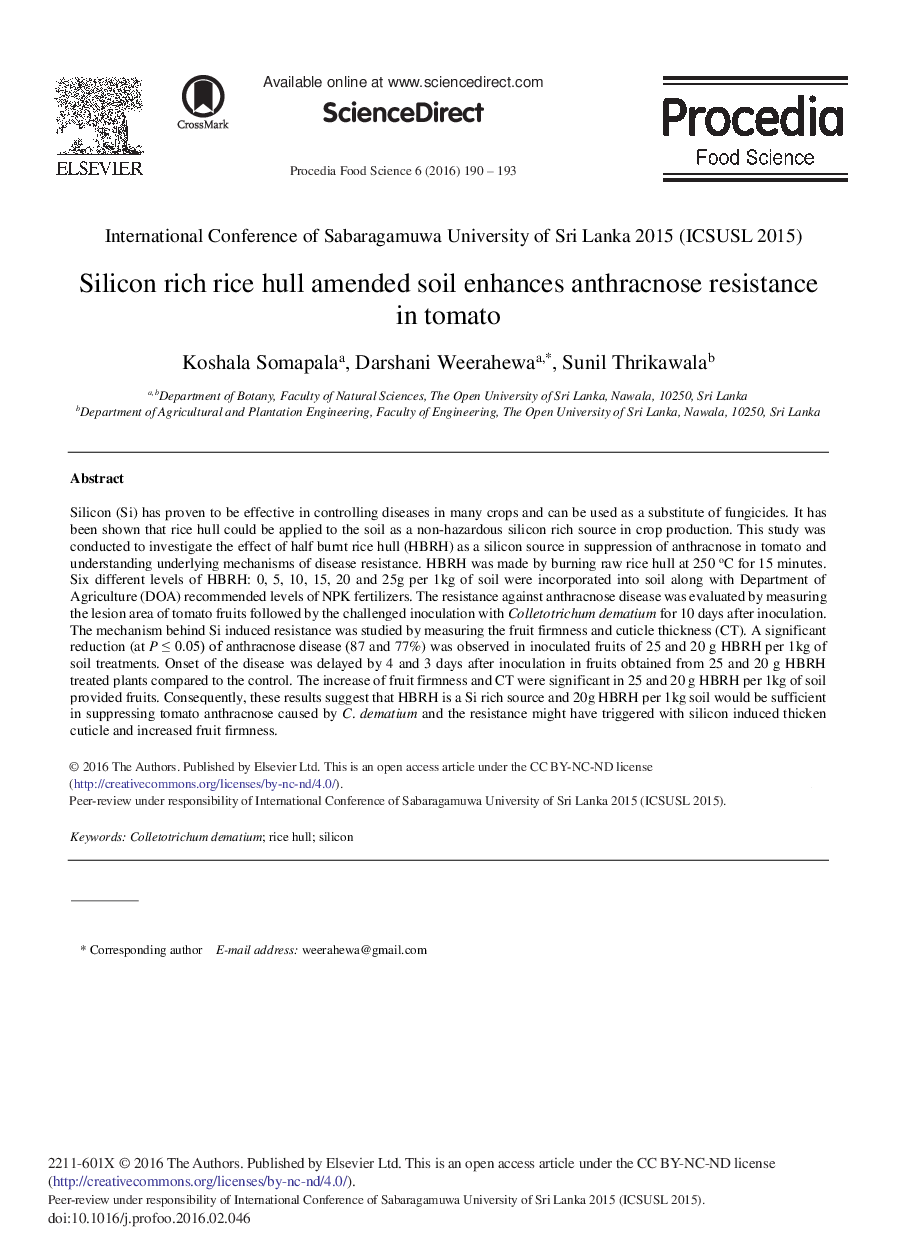| Article ID | Journal | Published Year | Pages | File Type |
|---|---|---|---|---|
| 1266203 | Procedia Food Science | 2016 | 4 Pages |
Silicon (Si) has proven to be effective in controlling diseases in many crops and can be used as a substitute of fungicides. It has been shown that rice hull could be applied to the soil as a non-hazardous silicon rich source in crop production. This study was conducted to investigate the effect of half burnt rice hull (HBRH) as a silicon source in suppression of anthracnose in tomato and understanding underlying mechanisms of disease resistance. HBRH was made by burning raw rice hull at 250 °C for 15 minutes. Six different levels of HBRH: 0, 5, 10, 15, 20 and 25 g per 1 kg of soil were incorporated into soil along with Department of Agriculture (DOA) recommended levels of NPK fertilizers. The resistance against anthracnose disease was evaluated by measuring the lesion area of tomato fruits followed by the challenged inoculation with Colletotrichum dematium for 10 days after inoculation. The mechanism behind Si induced resistance was studied by measuring the fruit firmness and cuticle thickness (CT). A significant reduction (at P ≤ 0.05) of anthracnose disease (87 and 77%) was observed in inoculated fruits of 25 and 20 g HBRH per 1 kg of soil treatments. Onset of the disease was delayed by 4 and 3 days after inoculation in fruits obtained from 25 and 20 g HBRH treated plants compared to the control. The increase of fruit firmness and CT were significant in 25 and 20 g HBRH per 1 kg of soil provided fruits. Consequently, these results suggest that HBRH is a Si rich source and 20 g HBRH per 1 kg soil would be sufficient in suppressing tomato anthracnose caused by C. dematium and the resistance might have triggered with silicon induced thicken cuticle and increased fruit firmness.
